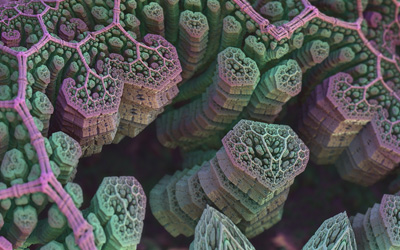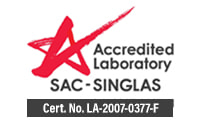
Singapore IAQ Environmental Laboratory Offers Bacteria & Fungi Testing up to Speciation Level
Bacteria and fungi are usually the most significant airborne biological pollutants affecting human health. They contribute to poor indoor air quality and are one of the major causes of work-loss – running into hours and days per person – and the additional costs of doctor visits.
Despite outdoor sources, bacteria in indoor air commonly originate from the mouths, noses, nasopharynx, and skins of occupants. Therefore, concentrations of bacteria found inside dwellings are related to occupancy and activities, as well as the performance level of air conditioning systems.
Fungi in indoor air may be microscopic types such as yeast and molds, or macro-fungi that produce sporangia bodies visible to the naked eye. Fungi colonize and further produce numerous aerially dispersed spores, which easily spread the microorganism throughout the living space. They may originate out of doors, but fungi are well able to propagate and produce spores on indoor surfaces and materials.
Some diseases and symptoms associated with exposure to bacteria and fungi are upper respiratory conditions such as asthma, fever, allergic reactions and dermatological problems.
Singapore’s National Environment Agency recommends that the maximum threshold level for Bacteria and Fungi should not exceed 500Cfu/m3 based on “Guidelines for Good Indoor Air Quality in Office Premises.”
Identifying sampled species up to speciation level can give you a good understanding of the microflora in your indoor environments. There are a various way to test your indoor environments:
Bioaerosols Assessment and Control
We use indoor air and surface sampling to help determine the level of biological loads present in your environment. These contaminants can cause irritation or adverse short or long-term health problems. Tests can locate the sources of indoor microorganisms to facilitate effective remediation.
Agar Impaction Sampling
Culturable sampling is one of the most common methods of volumetric air analyses. The sampling device works by drawing a measured volume of air through an instrument that contains a petri dish containing a culture medium. Spores that impact onto the plate are then allowed to incubate and grow after which the colonies may be counted and identified.
Non-culturable Spore Trap Sampling
Non-culturable spore trap samplers draw measured volumes of air through a sampling device for a specified length of time. The collection surface is a sticky-coated glass slide. Particles in the air (spores, dust, etc.) impact onto the sticky surface and are “trapped” for later analysis.
Surface Swab Sampling
Surface samples can be taken by tape lift imprint, wiping the suspect surface with a special swab, or submitting a bulk sample of surface into a petri dish.
Air and surface sampling are used to identify biological agents and assist us in understanding the conditions that allow them to grow. It suggests possible pathways of propagation from the environmental source to human occupants by understanding exposure-response and health effects.
The success of any sampling method and its interpretation are dependent on a disciplined and methodical approach by the microbiologist. The speciation of the sampled microorganisms will identify the resident bacteria and fungi and indicate:
- Whether they are pathogenic and, if so, the possible health consequences
- The possible source of the micro organism reservoir/amplification point
- Whether they originated internally or from an external source
IAQ’s vast experience of indoor environmental sampling, has earned us an unrivaled reputation as the experts in locating the source of microbial contamination.


